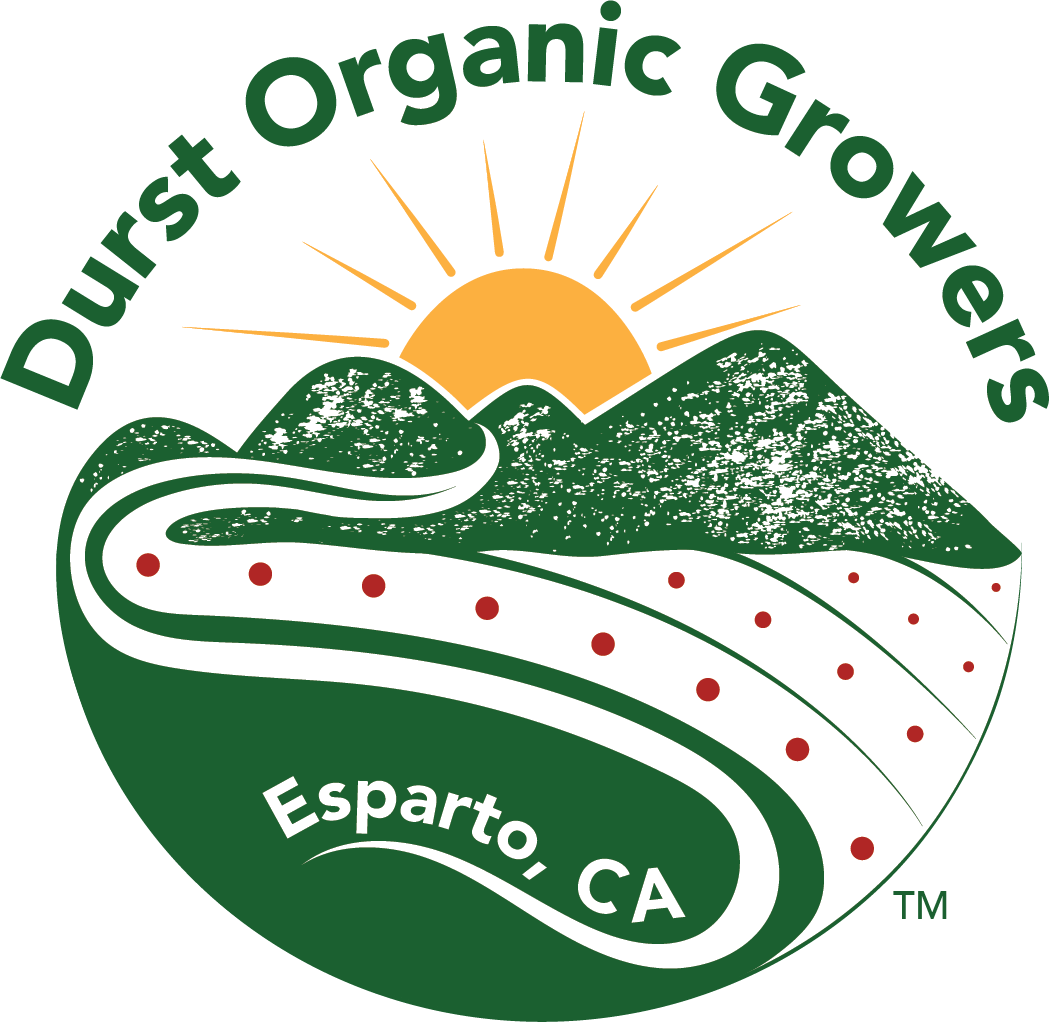Irrigation & Water Management
How We Irrigate & Conserve
Growing vegetables in the dry, arid central valley of California requires irrigation. Water on our farm comes from two sources: wells and surface water. Our well water is pure and void of pollutants and salts. We have deep wells that range in depth from 400-900 feet. These wells supply clean, abundant water for our irrigation needs. We also have surface water available that is delivered to our farm via canals. Built in the 1930’s and 40’s, this water comes to us via Cache Creek from both Clear Lake and Indian Valley reservoir. Use of surface water helps us maintain our aquifers levels.
Water is a precious resource on our planet and we have taken steps to conserve its use on our farm. At Durst Organic Growers, we irrigate using three different methods: buried drip, sprinklers, and flood. The sprinkler and flood methods are used very sparingly while the drip tape is the primary method of irrigation we employ. We began using drip irrigation in 1997. Drip tape is installed about 10” below the plant, underground. Filtered water is supplied to this drip tape via an underground network of PVC pipe. Using drip tape offers many benefits including:
Ability to water plants and their root systems directly and efficiently without losing any water to runoff or evaporation;
Ability to harvest and irrigate simultaneously;
Helps to minimize weeds by keeping the top of the soil dry;
Can be used for 3-5 years before needing to be removed and recycled.
Sprinkler irrigation is used during the spring months to establish transplants and germinate seeds. We also occasionally use sprinklers to pre-irrigate some fields prior to planting. This allows us to germinate weeds so that we can cultivate them out before seeding or transplanting.
Flood irrigation, which involves running water on the surface and allowing it to slowly sink into the soil, is used for crops like alfalfa or grain.
Water Testing
As part of our food safety and water management plans, we conduct water source risk assessments twice a year and have our water analyzed several times a year, using an FDA approved method, to ensure that our water is clean for pre- and post-harvest purposes. For more information about our food safety plan, click here.
<< Back to Philosophy and Practices
Learn More About our Irrigation…









While we’re feeling grateful for the rain, we consider how winter’s water affects our upcoming growing season in the Hungry Hollow…